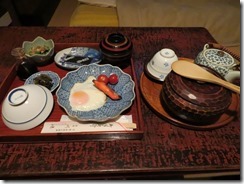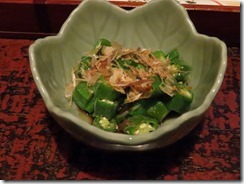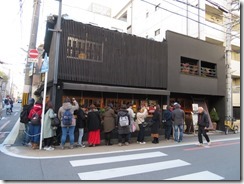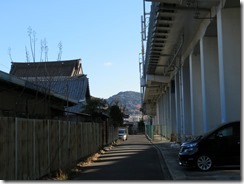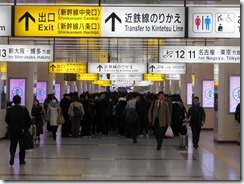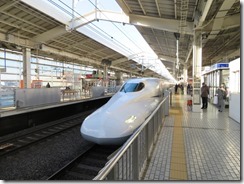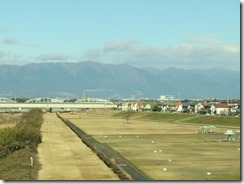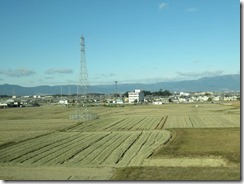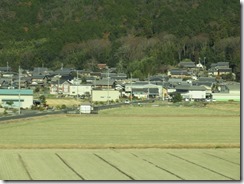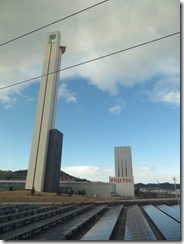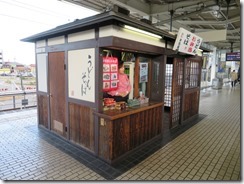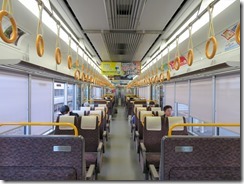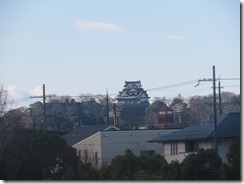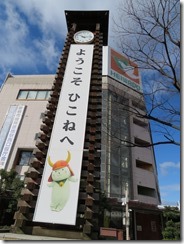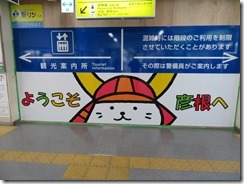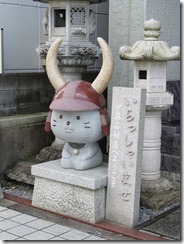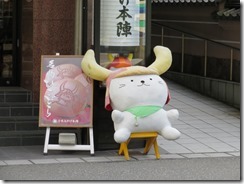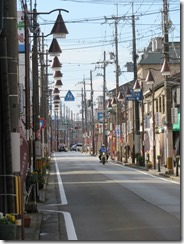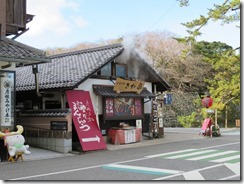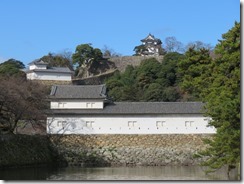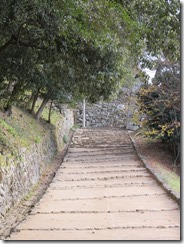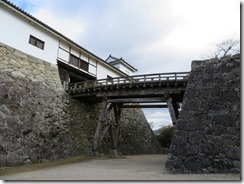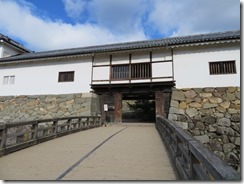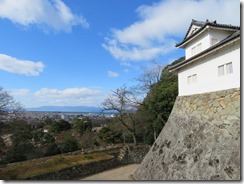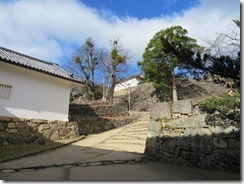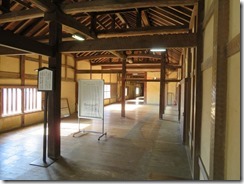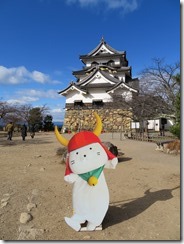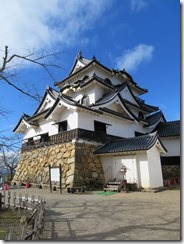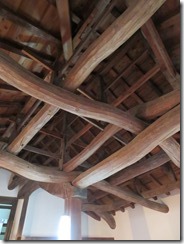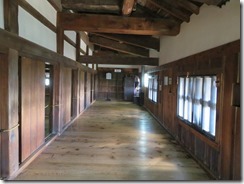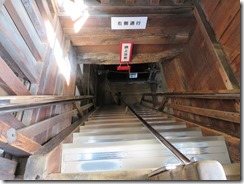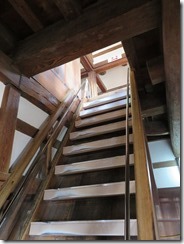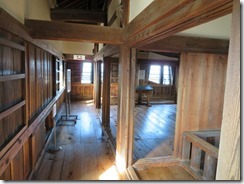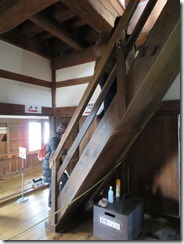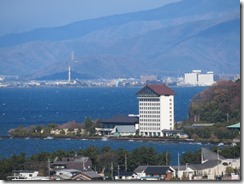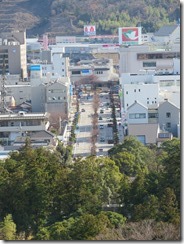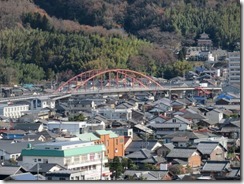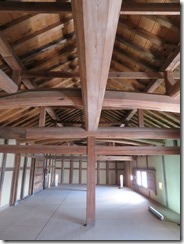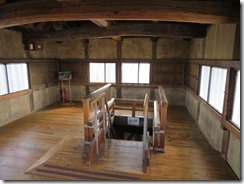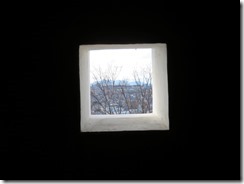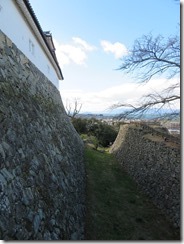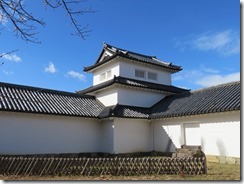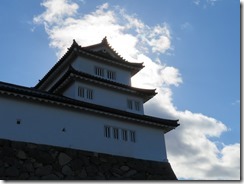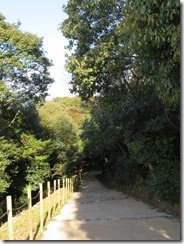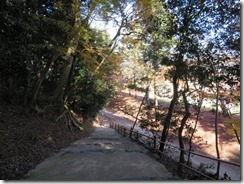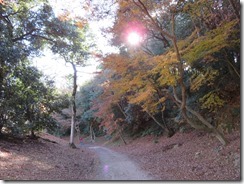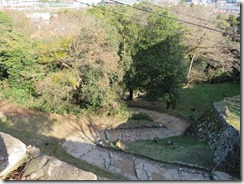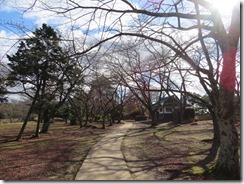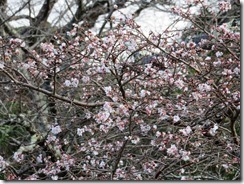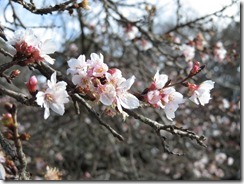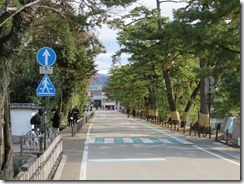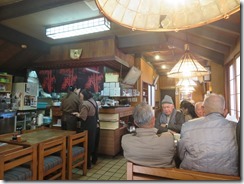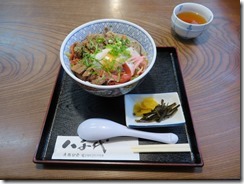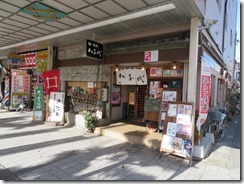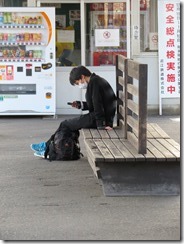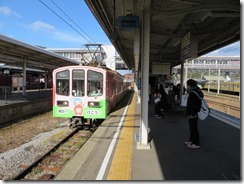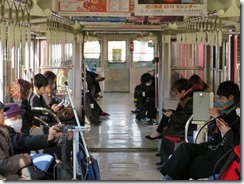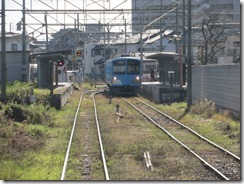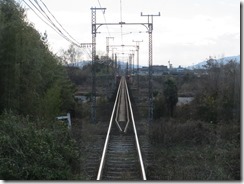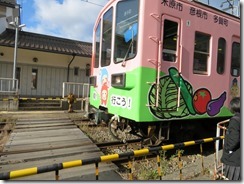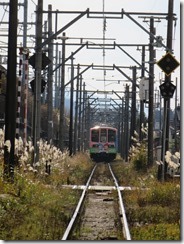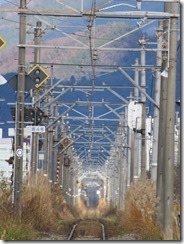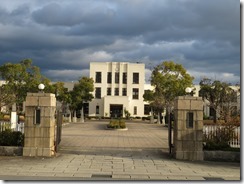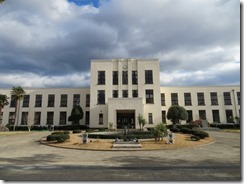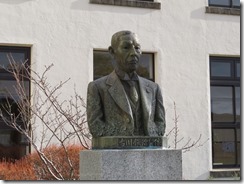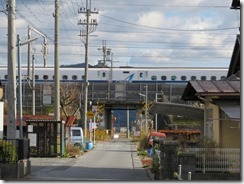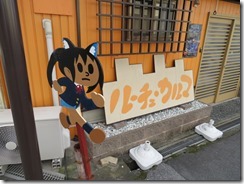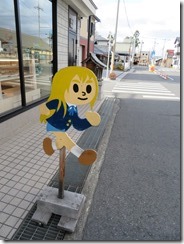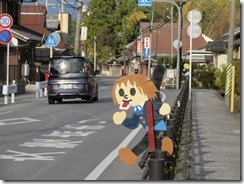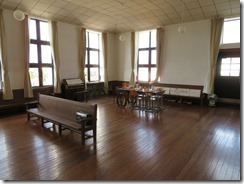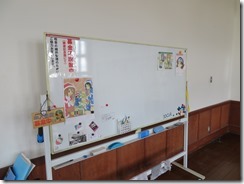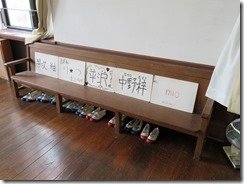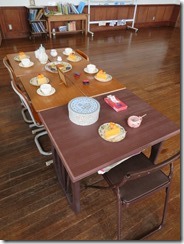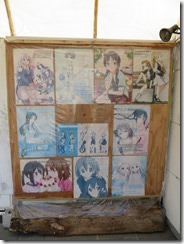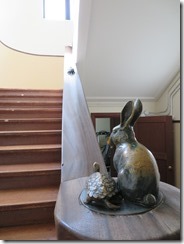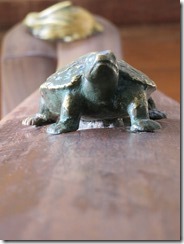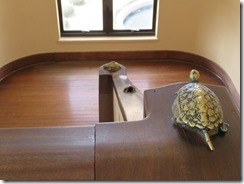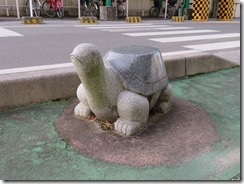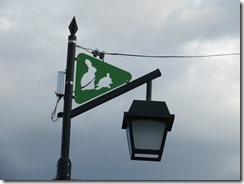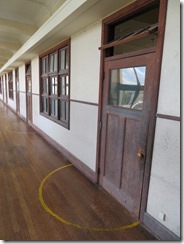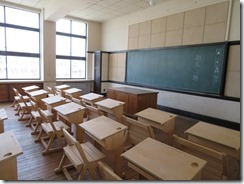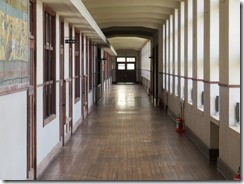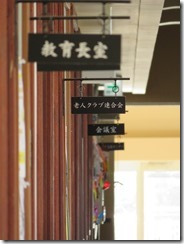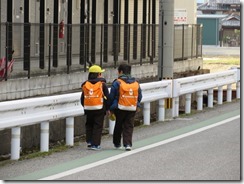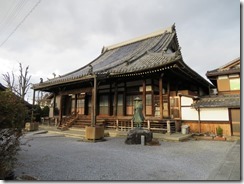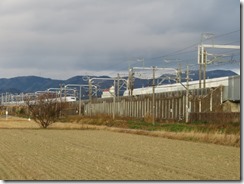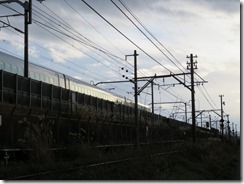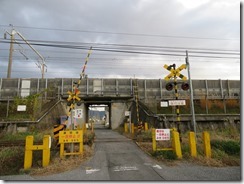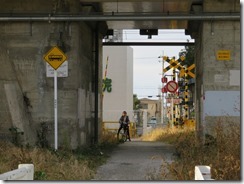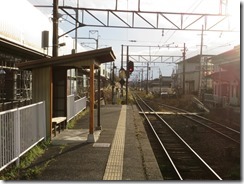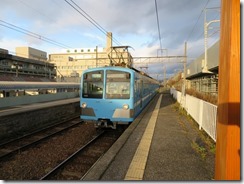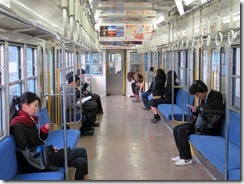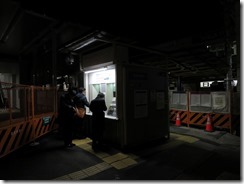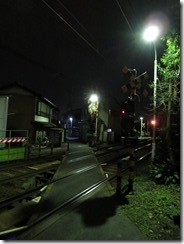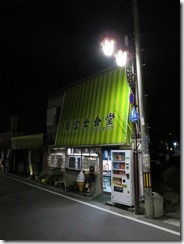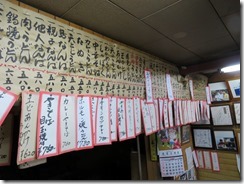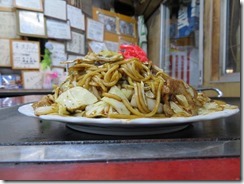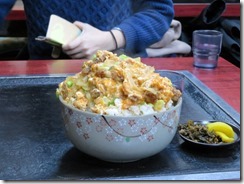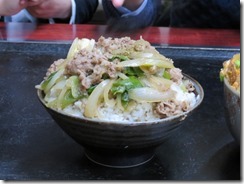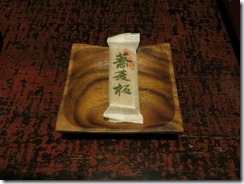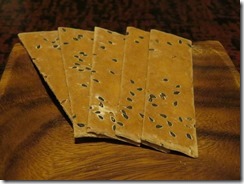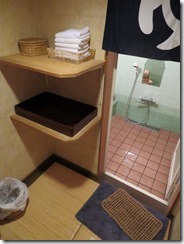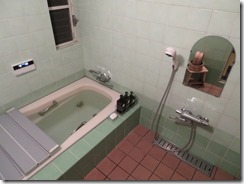I swear my blogging is taking longer to do. It wasn’t all that late when I started, but it’s sure late now.
Here in Japan, all mobile phone cameras make an audible “ka-click” noise when used, and this noise cannot be silenced even by muting the phone or turning down the volume – this, supposedly, is not required by law, but is simply a voluntary agreement between all the mobile phone companies. Simply put, there’s a small subset of the Japanese male population who simply cannot be trusted to not misuse the cameras – most especially, by taking photos up the skirts of women and girls. But here’s the issue from my point of view – pretty much everyone uses their phone cameras to take photos. Actual cameras seem to be few and far between. I can be in the wilderness or a peaceful temple garden trying to enjoy the serenity and sounds of nature, but instead all I get is “ka-CLICK” from all sides…
So, today started with breakfast, as it tends to. It included a bowl of what I first thought to be chilies, but upon more research, it turned out they were okra. Don’t think I’ve ever had okra before… that I’m aware of.
Headed out right after breakfast in an attempt to fit in as much sightseeing as I could. This, incidentally, is how you tell that a place is worth eating at – it’s still only ten to nine in the morning:
I was heading out a little way east today, to Shiga Prefecture, which neighbours Kyoto (it’s just on the other side of the mountains on the eastern side of the city). With the magic of my JR Pass, I could get a shinkansen to the next stop and come back on a regular train faster than I could get there by regular train direct, so I was aiming to get to Kyoto Station in time to book a ticket on the 9:08 Kodama. And I did… except I wound up stuck behind a couple who seemed to be taking forever. By the time they were done, it was already 9:06, and the train man didn’t think I could still make it to the train in time, so he booked me for the next train, the 9:32 Hikari.
Well, on the plus side, it gave me twenty minutes to spend checking out what was on the south side of the station, because I’d never been that way. Didn’t have the time to do much more than walk around the block, though.
Soon I was on my way. And soon after that, I was at the next stop, Maibara, where I switched to the Biwako Line. Interestingly, the name “Biwako Line” is just a nickname, referring to the Tokaido Main Line between Kyoto and Maibara, then the Hokuriku Main Line from Maibara to Nagahama. Anyway, point is, just one stop back towards Kyoto, and I was at Hikone, site of today’s first activity: Hikone Castle.
On a side note, it seems that the shinkansen trains have replaced the smoking carriages with just smoking rooms in specific carriages. I can remember on our last trip seeing carriages absolutely hazy with cigarette smoke, and being in the carriage adjacent to the smoking carriage on our trip from Hiroshima to Kyoto able to smell it, so that’s rather a welcome change for me.
Also, I saw this little place on the platform at Maibara. I’ve been wanting to try eating at one of these little platform eateries, but I haven’t really seen any – mostly they’re just convenience store kiosks.
Hikone Castle is (along with Matsumoto Castle and Himeji Castle from our last trip) one of the twelve remaining original castles in Japan. It was built in 1603… or possibly “assembled” is the correct word, because it seems to be entirely comprised of buildings that were moved from other castles. The main keep comes from Otsu Castle, while other parts came from Nagahama Castle. Many of the stones came from Sawayama Castle. It’s one of the oldest original castles.
The city also has a mascot, Hikonyan (“nyan” is the onomatopoeia for a cat’s meow in Japanese) – basically he’s a white cat wearing a helmet with ridiculous horns. Turns out Ii Naomasa, the father of Ii Naokatsu (who ordered the castle built), is involved in the legend of the beckoning cat (i.e. the one you see in Chinese and Japanese shops waving at you). Ii Naomasa was once travelling in a storm, and when a temple cat beckoned at him to come in, he did so – and just as he did, lightning struck the tree he had been sheltering under. Thus the tradition of the maneki-neko was born, and thus Hikonyan is a white cat wearing Ii Naomasa’s helmet. (The temple in question, incidentally, was Gotoku-ji in Tokyo. I’d like to visit, but I don’t know if I have time.)
But anyway, as I approached the temple, a little old lady came and advised me that the usual stairway that everyone takes to get up to the temple is kinda boring, and there’s a more interesting one around the back, and would I like her to show me the way? And before I’d translated all that in my head, we were already walking together. Now, don’t get me wrong, it was nice of her to show me, but… she kinda walked slow, and I was on a bit of a timetable. At one point, we were even walking down the middle of the road (though it occurred to me in hindsight that maybe she was trying to imply that we should cross the road, but she was just too polite to shove me over). She talked my ear off the entire time – think I understood maybe ten percent of it. That’s her in the last photo.
She showed me to the back ticket gate and left me there, so I went in and headed up. It was, to be fair, fairly nice. And if I hadn’t known about the other staircase, I might have wasted time investigating it anyway. The stairs are difficult to walk up, which is the point – the heights are all different, and the spacing is all different, all intended to make it near impossible to march up to attack. At the top, the path leads under the drawbridge, then up some more stairs to a little plateau where you can access the drawbridge.
On the other side of the drawbridge was the gatehouse, and you could go inside and look at the construction. One thing I found a little curious is that the gateway in an English castle like this would be full of arrow slits and murder holes, but this gatehouse had none of that – just lots of vantage points for archers sitting inside the bailey to aim at the gate. I had to take my shoes off to go inside, but fortunately they provided slippers.
Then I went to see the main keep. It’s three storeys tall, and the steps to climb up are so incredibly steep. Nice view at the top, mind, of the town of Hikone, and also of Lake Biwa, Japan’s largest freshwater lake. Not too bad a place to live, if you can keep it heated. Lots of arrow slits and cannon ports. However, I had to take my shoes off again, and this time there were no slippers. Since the seventeenth century didn’t seem to consider under-floor heating, my feet were incredibly cold by the time I was done – I could barely feel them.
After the keep, I had a look around the rear garden, and found the turret at the back could also be entered. Again, three storeys with steep steps. And again, had to take my shoes off. They were pretty much completely numb by the time I was done there. Headed back down the ground level and back to the train station to get my next train – the Ohmi Main Line.
On the way, I saw this little copse of cherry blossom trees that can bloom even in winter, if I was reading the sign right. They were blooming, in any case.
Taking its name from an old name for Lake Biwa, the Ohmi Line is operated by the Ohmi Railway, the oldest private railway company in Shiga Prefecture, having been founded in 1896. It runs these cute little one- and two-car trains (similar to yesterday’s Kurama Line). The nickname used by the locals for it is “gachakon train” because of the noise it makes. It runs parallel to the shinkansen route for much of the way.
Buuut, when I arrived on the platform, I’d missed the (hourly) train by a few minutes. So instead I popped back out of the station to grab some lunch from a nearby place that had caught my eye. I had Hikone-don, a local specialty – Omi beef “gristle” (according to the English menu, but that’s gotta be a mistranslation), red konjac and an egg on rice (i.e. the –don part of the name). Most tasty.
Got back to the station for the train. Headed just a few stops up the line to my next destination, Toyosato. The Ohmi Line station at Toyosato is pretty much in the shadow of the shinkansen line, and the line runs pretty much dead straight along the tracks, so I had a bit of fun taking some photos, before heading to what I was actually here for: to go to school.
To be precise, the Old Toyosato Elementary School Building. Once an actual school, now a museum of sorts, because the actual school moved to a new building in 2004. I’d kinda wanted to look inside an actual school somehow (though possibly one with actual students too), but this one drew my interest for another reason too: the building served as the model for the school which appears in the anime K-On.
The anime is about four girls (later five) who form a light music club at school. Their club meets in the music room at the top of the school, where they write songs to play, or practice them, but more often than not, just drink tea and eat cakes and talk instead.
The school in real life bears a surprisingly close resemblance to the one in the anime… or rather, the other way around – though of course there are a few differences. Most of the old building commemorates the school, but the music room at the top of the building has been set up as a shrine to the series, with a table full of tea and snacks, a rack full of cosplay in the back room, and a whiteboard covered in goofy doodles. The town has grabbed the idea and run with it a bit, too – wooden cutouts of the characters (and a few characters from other series) appear by the side of the roads pointing the way to the school.
From photos I’ve seen, it seems fans bring gifts and tributes they’ve made – fanart and so forth – and write messages of support on the blackboard, but it looks like noone had been in a while today, because the room was pretty clean. It also seems like they come en masse for characters’ birthdays and have a party, because I saw a few posters advertising it in the town. (One thing about anime series is that character bios will always include things like birthdays, blood type, BWH sizes, favourite foods, hobbies, and so forth, even when such information is never referenced in the series itself.)
It was pretty interesting. Once again I had to take my shoes off, but fortunately they provided slippers. Completely smooth on the bottom, though – I almost slipped over several times, including one time on the stairs.
The stairwell railings have small statues (also depicted in the anime) showing the story of the tortoise and the hare – you can see them standing together at the bottom, then the hare can be seen sleeping on each landing while the tortoise makes his way up, until at last the tortoise can be found standing at the top with the hare nowhere in sight. Actually, much of the town seemed to be making a thing of the whole tortoise-and-hare theme – there were tortoise and hare silhouettes on the light poles, and the main street had stone stools shaped like tortoises and hares.
But back at the school, one thing I liked was that the top floor landing had a dial on the ceiling directly connected to the weathervane on the roof – you could tell which way the weathervane was pointing because the dial would point the same way. The floor underneath was disturbingly soft, though.
Headed back to the train line to take a few more photos, then it was time to re-board my train. My next stop, Omi-Hachiman. That’s actually on a branch line, not on the Ohmi Main Line, so I was worried I’d have to fuss about changing trains, but it turns out that some Ohmi Main Line trains terminate there instead – and conveniently, the train that left Toyosato Station exactly two hours after the one I’d arrived on was one of those trains, which gave me a nice timeframe to investigate the school and get back in time.
Sadly, by the time I arrived in Omi-Hachiman, the sun had set. My plans here were to visit the grounds of the old castle, which are on top of a mountain with a cable car and a spectacular view of Lake Biwa, but of course that wasn’t going to happen after dark. Rather than wander the town randomly in the hopes of finding something that was happening after dark, I decided to just call it a loss and move on. That was the end of my plans for today, but I realised I could resurrect one thing on my aborted plans for yesterday – specifically, my plans for dinner.
I hopped on to the Biwako Line, which also stops in Omi-Hachiman, and rode most of the way back to Kyoto until I reached Zeze Station. Zeze Station is also shared with the Keihan Sakamoto Line (which would be served by the day pass I bought yesterday, you see), and two stops down the line, just next to Zezehonmachi Station, was Mifuji Diner, a place I’d been interested in ever since I saw it on TV, in a show on NHK World.
I say it was two stops the line, but it was also just a ten minute walk, so I walked it. For the first half, I walked down the direct road connecting the two stations, but for the second half I tried walking down some of the back alleys. Many of them very small, most of them very dark, but a lot of them had the Keihan line cutting right through the middle of them, and there was a tiny little level crossing – complete with gates – every time. Might be fun to come back with more daylight (and more patience to wait for trains to take photos of).
Soon, I made it to the restaurant. It was largely as I’d seen it on TV. In fact, the walls were covered with signed cards from various TV crews, so it seems like it had been featured a few times. There was a kerosene heater keeping things warm. The menu was a huge roll of paper running across one wall, with extra additions glued to the bottom edge. It was taking me all night to try to read it, so eventually I gave up and asked for a recommendation. I had yakisoba (fried soba noodles).
One thing this place is known for is huge serving sizes, and it certainly was huge. And tasty. I was alone in the place while I was eating, but just as I was finishing up, a group of four walked in, and the things they ordered were huge too.
Soon, it was time to head back to my hotel. Just as I stepped outside, I heard the level crossing on the Keihan line start donging, so decided I’d be lazy and catch the train the two stops back to Zeze, since it was basically right there. Then when I arrived back at Zeze, the Biwako Line train back to Kyoto station was also right there. Then at Kyoto Station, once I found the right exit, when I reached the subway platform, the subway train was right there. So I basically got home in no time at all. Relatively speaking.
Tonight’s snack waiting in my room is… not too sure. Some kind of sweetish cracker thing. There’s also been tea every night, though I’m not a huge tea drinker. I generally pour myself a cup of hot water to hold, though, because it’s nice and warm. Doesn’t taste too great, though – wonder if that’s why people drink tea; to disguise the taste. Also took some photos of the bath room.
Time to pack, now. I’m checking out of this ryokan first thing tomorrow and heading to my next destination. Where, you say? What, you thought I’d tell you just like that? =P
Today’s photo count: One thousand and fifty-one.
Today’s pedometer count: 19,830 steps or 14.9 km
Today’s goshuin count: None, but I didn’t visit any temples or shrines
Today’s stamp count: Four, bit a bit of a mixed bag. Seems like the Biwako Line stamps have this big mechanism with a lever you can use to apply the stamps, but I feel that doesn’t give you much fine control. The one I got at Maibara Station didn’t touch the centre of the stamp to the page, and I didn’t have the time to try again. Then I got one at Hikone Station but pressed slightly too hard, and one at Omi-Hachiman Station and pressed slightly too soft. Also got one at Hikone Castle. Couldn’t find any stamps at the Oumi Line stations or Zeze Station.

